 Dead with the Wind (Southern Ladies Mystery, #2) by Miranda James
Dead with the Wind (Southern Ladies Mystery, #2) by Miranda James Format: ebook
Source: purchased from Amazon
Formats available: paperback, ebook, audiobook
Genres: cozy mystery, mystery
Series: Southern Ladies Mystery #2
Pages: 304
Published by Berkley on September 29, 2015
Purchasing Info: Author's Website, Publisher's Website, Amazon, Barnes & Noble, Kobo, Bookshop.org
Goodreads
The New York Times bestselling author of Bless Her Dead Little Heart and the Cats in the Stacks mysteries brings back the Ducote sisters, two spry Southern sleuths.
An’gel and Dickce Ducote tend to stay put in Athena, Mississippi, but a wedding is a good reason to say a temporary farewell to Charlie Harris’s cat Diesel and go visit relatives. But while their stay in Louisiana is scorching hot, the atmosphere at the wedding is downright cold, with bride-to-be Sondra Delevan putting her trust fund above little things like love and loyalty.
When a violent storm supposedly sweeps Sondra off a balcony to her death, the sisters discover that many of the guests attending the wedding had major reasons to object to Sondra’s marriage. Now, it’s up to An’gel and Dickce to use their down-home instincts to expose dubious alibis, silver-plated secrets, and one relentless murderer who lives for “till death do us part.”
My Review:
 On what was feeling that Mondayest Monday ever, I needed a comfort read. Since I’m currently caught up with the Cat in the Stacks series, I turned to the same author’s Southern Ladies Mystery series to sink into a whole lot of cozy, with animal companions both around me and between the pages – along with just a couple of dead bodies to add a bit of excitement. But not too much.
On what was feeling that Mondayest Monday ever, I needed a comfort read. Since I’m currently caught up with the Cat in the Stacks series, I turned to the same author’s Southern Ladies Mystery series to sink into a whole lot of cozy, with animal companions both around me and between the pages – along with just a couple of dead bodies to add a bit of excitement. But not too much.
Dead with the Wind is a story about family ties. The ones that bind get the Ducote Sisters into this situation, but it’s the ties that strangle that lead to the murder. Not that someone shouldn’t have strangled Sondra Delevan a long time ago.
The Ducote Sisters are in St. Ignatiusville, Louisiana at their cousin Mireille’s antebellum city mansion for Sondra’s wedding. An occasion that does not get off to an auspicious start when An’gel Ducote righteously dumps a vase filled with water on Sondra’s overreacting head.
I’d say Sondra was a bridezilla, but that implies that she’s normally a halfway reasonable human being and is only being such a demanding bitch because of the wedding, and that’s not remotely the case. Sondra is demanding bitch 100% of the time and always has been. She’s one of those adults that people other than her immediate family look at and think that the universe would have been better off if she’d been disciplined instead of indulged a few – possibly a lot – of times in her childhood when it would have done some good.
So when Sondra is murdered, it’s not so much that the reader is surprised that someone killed her as amazed that it didn’t happen a whole lot sooner.
But the circumstances of Sondra’s death are rather suspicious, because her death and the manner of it fall all too closely on the heels of the housekeeper proclaiming that the wedding is ill-omened as it resembles a long-ago tragedy much too much. There’s a long arm of coincidence here that is way too long to convince either of the Ducote Sisters.
That before her death Sondra was such a heartless little bitch as to stage a scene that drove her grandmother, the Ducotes’ Cousin Mireille, into a heart attack and her grave does not help anyone to think well of the recently and spectacularly departed Sondra, but it does make the Sisters wonder just who benefits from both of those deaths.
There’s something rotten in Cousin Mireille’s beautiful mansion. It looks like there’s someone close to the family circle determined to bump off everyone in their way. But in the way of what, exactly?
The Sisters – along with the local police – follow that first rule of investigation. They follow the money, and it leads them straight to the killer. Or does it?
Escape Rating B-: I went into this because I wanted something familiar but not quite so familiar that I’d know every single thing before it happened. And that is kind of what I got. The Ducote Sisters of Athena, Mississippi, introduced in the author’s Cat in the Stacks series, are the power behind nearly everything going on in Athena, and have been for decades. An’gel is 84 and Dickce is 80. They live in a palatial family mansion, they’re the last of their direct family, never married, never had kids, and pretty much keep Athena running, sometimes it seems all by themselves.
So it was fun to see them out of their element in this story, which is kind of a locked-room mystery. Not that the room or the house is literally locked, but rather that everything that happens seems to happen in the house and inside the rather tight family circle. Even if all the members of the family aren’t related by blood.
What made this story a bit less fun than I usually find this author, or even the first book in this series, Bless Her Dead Little Heart, is that no one involved is all that likeable except for Sondra’s little girl Tippy and the family butler and general factotum, Grayson. All the rest of them are pieces of work, from Sondra the spoiled sociopath to her on-again-off-again fiancé to her stepfather and unfortunately but definitely including her mother and grandmother (Cousin Mireille). The mansion seems to be a veritable hothouse of all sorts of -pathy. Except sympathy as there really isn’t a whole lot of that going around.
Also, a big part of the story is that Sondra is marrying Lance because, frankly, Sondra is looking for someone she can control, getting married gets her control of the substantial fortune she inherited from her father, and there’s something not quite right about Lance. There are multiple things about Lance that aren’t quite right, but his maturity level and that of Sondra’s three-year-old daughter are about on a par. The family treats it as an open joke, but are still allowing the marriage because no one wants to cross Sondra. The situation did not sit well, or rather the way everyone treated did not sit well.
This turned out to be one of those stories about families that pretend everything is fine but where things are really, really wrong. Like Sondra’s extremes of behavior and self-centeredness. And Lance’s undiagnosed but joked about issues.
 So I felt a bit more discomfort than desired for something I picked up as a comfort read. Even though Sondra’s death was very cathartic. Some characters just need to be let out of a story at the very first opportunity. By the time the killer’s identity was revealed it wasn’t much of a surprise – nor was I expecting it to be as this is not that kind of book.
So I felt a bit more discomfort than desired for something I picked up as a comfort read. Even though Sondra’s death was very cathartic. Some characters just need to be let out of a story at the very first opportunity. By the time the killer’s identity was revealed it wasn’t much of a surprise – nor was I expecting it to be as this is not that kind of book.
But the way it got revealed – now that was a surprise. And it made a wonderful ending for a story that had a few more downs than ups.
I’m glad that the next book in this series, Digging Up the Dirt, places the Sisters back home in Athena where they belong!

 Wait for It by
Wait for It by 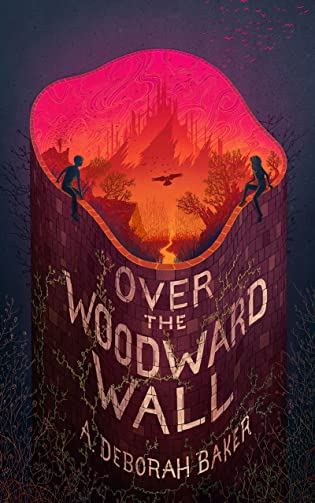 Over the Woodward Wall (The Up-and-Under, #1) by
Over the Woodward Wall (The Up-and-Under, #1) by 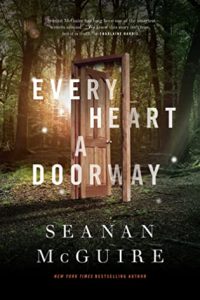 If Alice’s Adventures in Wonderland was the grandparent book, and Narnia and Oz were the parent books – but wait, there’s another generation in there. If Alice was the great-grandparent, Narnia and Oz were the grandparents and Seanan McGuire’s
If Alice’s Adventures in Wonderland was the grandparent book, and Narnia and Oz were the parent books – but wait, there’s another generation in there. If Alice was the great-grandparent, Narnia and Oz were the grandparents and Seanan McGuire’s 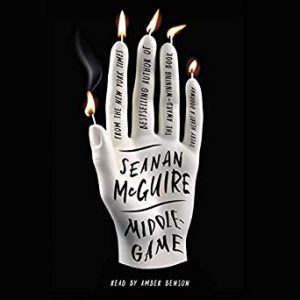 Like Wonderland and Narnia, there are four kings and queens – or there are supposed to be four kings and queens. But the royals currently in office are all rather like the Wicked Witch of the West, or the White Witch in Narnia. While the road that Zib and Avery are traveling on, like the Yellow Brick Road of Oz, is neither as straight nor as without danger as the locals claim it to be. Although Zib and Avery’s companions, the Crow Girl and the Drowning Girl, while they are certainly missing something essentially it’s nothing so straightforward as brains, a heart or even the nerve, nor is it going to be as simple to discover how to get them back.
Like Wonderland and Narnia, there are four kings and queens – or there are supposed to be four kings and queens. But the royals currently in office are all rather like the Wicked Witch of the West, or the White Witch in Narnia. While the road that Zib and Avery are traveling on, like the Yellow Brick Road of Oz, is neither as straight nor as without danger as the locals claim it to be. Although Zib and Avery’s companions, the Crow Girl and the Drowning Girl, while they are certainly missing something essentially it’s nothing so straightforward as brains, a heart or even the nerve, nor is it going to be as simple to discover how to get them back.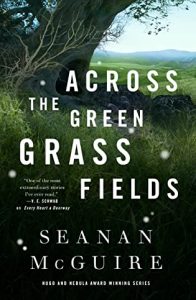 The irony for this reader is that I liked this story – maybe not quite as much as
The irony for this reader is that I liked this story – maybe not quite as much as 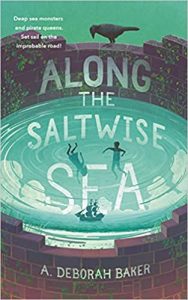 Zib and Avery are changing all the time, and as we learn at the end of the story, real time is passing both for them and for their parents back home. While on the one hand this feels like a fairy tale, on the other it definitely reads like a journey with consequences. Zib and Avery have an important mission to complete in the Up-and-Under, and their experiences in that world have already changed them from who they were – and who they would have become as a result. They already see the world differently, and it feels like those changes are going to have long-term effects, just as the children’s journeys do in Wayward Children.
Zib and Avery are changing all the time, and as we learn at the end of the story, real time is passing both for them and for their parents back home. While on the one hand this feels like a fairy tale, on the other it definitely reads like a journey with consequences. Zib and Avery have an important mission to complete in the Up-and-Under, and their experiences in that world have already changed them from who they were – and who they would have become as a result. They already see the world differently, and it feels like those changes are going to have long-term effects, just as the children’s journeys do in Wayward Children.

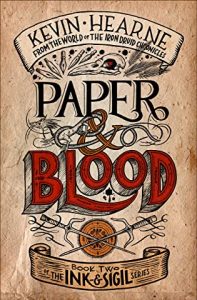 Blog Recap:
Blog Recap: Coming This Week:
Coming This Week:


















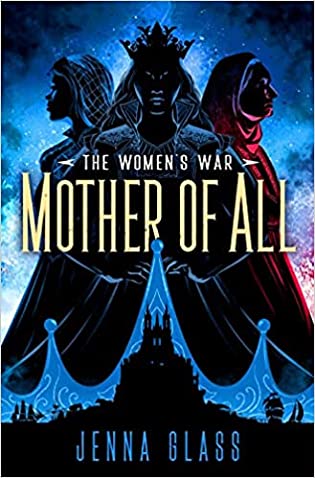 Mother of All (Women's War, #3) by
Mother of All (Women's War, #3) by 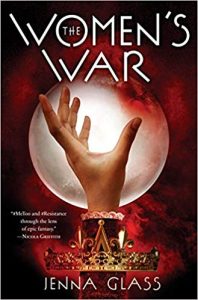 The story of Women’s War is a single story spread over three not insubstantial parts, meaning that it begins in the first book,
The story of Women’s War is a single story spread over three not insubstantial parts, meaning that it begins in the first book, 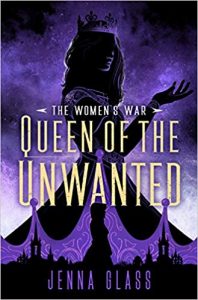 Escape Rating A: Short summary of the series – loved the first book, wasn’t all that thrilled with the second but it was necessary, loved the third book. This book. Mother of All brought this epic trilogy to an appropriately epic conclusion, and it made wading through all the setup and political positioning and maneuvering in the second book worth the wade. Also worth the wait of anticipating this conclusion.
Escape Rating A: Short summary of the series – loved the first book, wasn’t all that thrilled with the second but it was necessary, loved the third book. This book. Mother of All brought this epic trilogy to an appropriately epic conclusion, and it made wading through all the setup and political positioning and maneuvering in the second book worth the wade. Also worth the wait of anticipating this conclusion.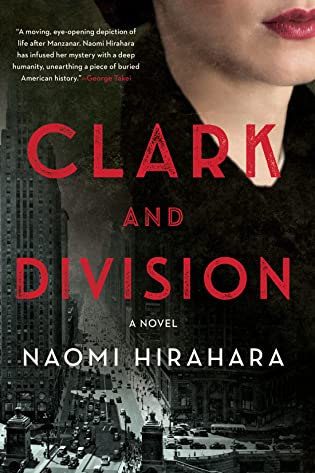 Clark and Division by
Clark and Division by 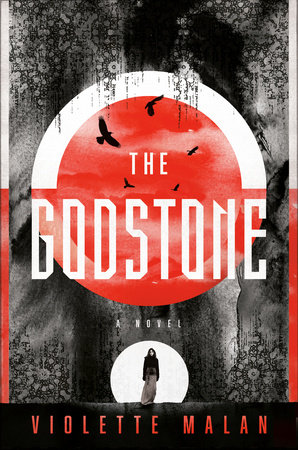 The Godstone by
The Godstone by 
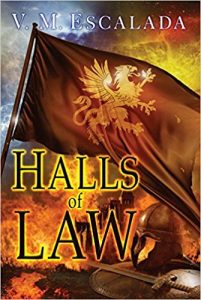 The story at first seems straightforward enough, in a sense, because it’s obvious to Arlyn from the very beginning that there are some seriously screwy political shenanigans going on in the capital that someone wants to entangle him in. So even though the political shenanigans themselves are more convoluted and dangerous than first appears – because of course they are – that initial framework itself is easy to understand.
The story at first seems straightforward enough, in a sense, because it’s obvious to Arlyn from the very beginning that there are some seriously screwy political shenanigans going on in the capital that someone wants to entangle him in. So even though the political shenanigans themselves are more convoluted and dangerous than first appears – because of course they are – that initial framework itself is easy to understand.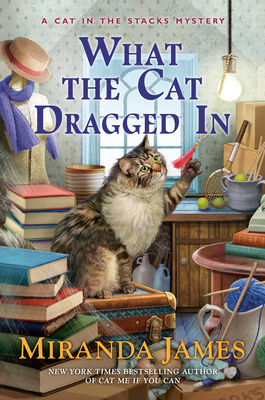 What the Cat Dragged in by
What the Cat Dragged in by 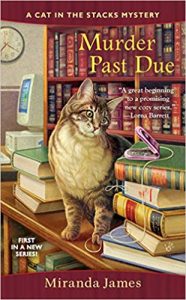 This book has been calling my name, loudly, with increasingly more high-pitched meows, until I finally just gave in and read it. The series features a 50-something librarian with the last name of Harris and his now two feline companions – one of whom is pictured on the cover of every book in the series. How could I possibly resist?
This book has been calling my name, loudly, with increasingly more high-pitched meows, until I finally just gave in and read it. The series features a 50-something librarian with the last name of Harris and his now two feline companions – one of whom is pictured on the cover of every book in the series. How could I possibly resist?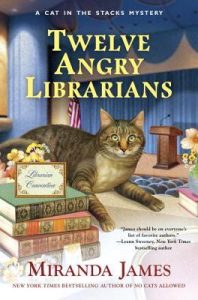
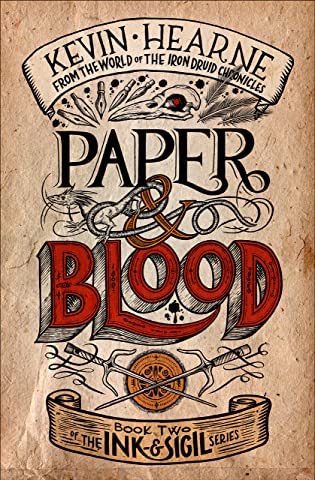 Paper & Blood (Ink & Sigil, #2) by
Paper & Blood (Ink & Sigil, #2) by 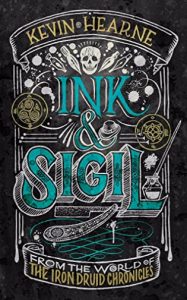 And that’s the kind of magic that lies at the heart of the
And that’s the kind of magic that lies at the heart of the 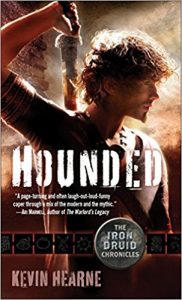 There’s never been any question that the Ink & Sigil series takes place in the same universe as the author’s Iron Druid Chronicles, it says so right there on the label. In the first book, also titled
There’s never been any question that the Ink & Sigil series takes place in the same universe as the author’s Iron Druid Chronicles, it says so right there on the label. In the first book, also titled